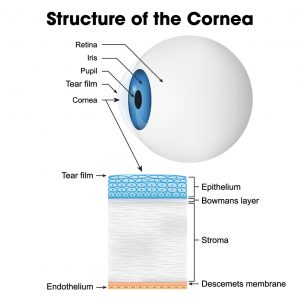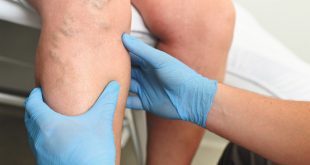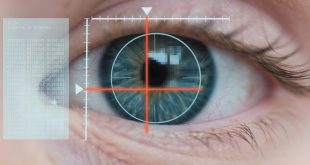 The transparent outer layer covering your iris and pupil is the cornea. Its role is to help the eye focus light. Obviously, this thin but tough little canopy is crucial to healthy vision. Any damage to the cornea will affect its ability to bounce light back to the retina, causing what’s called a refractive error. Imperfections in the shape of the eyeball and the cornea are the most common reasons folks need glasses, especially as they pass age 40.
The transparent outer layer covering your iris and pupil is the cornea. Its role is to help the eye focus light. Obviously, this thin but tough little canopy is crucial to healthy vision. Any damage to the cornea will affect its ability to bounce light back to the retina, causing what’s called a refractive error. Imperfections in the shape of the eyeball and the cornea are the most common reasons folks need glasses, especially as they pass age 40.
In case you want to know a little nerdy science stuff about the cornea, it is made up of five layers:
. The epithelium: this rugged gatekeeper drinks up vital nutrients from tears so it can keep stuff from entering your eye.
. Bowman’s membrane: this layer is composed mainly of collagen fibrils (tiny fibers) to provide structure and stability to the cornea.
. The stroma: the thickest layer of all, the stroma is strong, flexible and responsible for the cornea’s dome shape.
. Descemet’s membrane: this layer helps control corneal equilibrium, clarity and hydration. Oh, and (nerd alert!) it modulates TGF-β-induced posterior corneal fibrosis, just in case you were wondering.
. The endothelium: this monolayer of cells at the back takes all the moisture the stroma can’t absorb and directs it to a space behind the cornea called the anterior chamber. This chamber is full of essential fluid called aqueous humor, which regulates eye pressure.
That might be more than you needed to know, but it highlights just how amazing this little window to bright, clear vision is. Any damage, disease or deformity involving the cornea will impact vision to some degree, from needing glasses to becoming completely blind. Luckily, there are effective ways to protect corneal health, and address problems if they become more serious.
Common Corneal Conditions
1 Dry Eye. When the eye doesn’t produce enough tears or the tear layer is compromised due to allergies, disease or other factors, or the glands dotting the eyelid margins are blocked, the eyes can get dry. It is yet another thing that becomes more common as people get older. Chronic dry eye is not only uncomfortable, it can cause injury to the moisture-loving cornea, including abrasions and ulcers that can lead to vision loss.
2 Abrasions. While minor scratches usually heal on their own, a deeper injury can result in scarring, which can warp the cornea.
3 Keratitis. This inflammatory condition is caused by infection, injury, entry of a foreign body, allergies, dryness, or overexposure to UV light.
Keratitis can result in eye pain, redness, a foreign body sensation, light sensitivity and/or distorted vision. The number one cause of bacterial keratitis is improper use of contact lenses: wearing or reusing them for too long, or not cleaning and storing them properly.
4 Corneal dystrophies. These 20+ eye diseases, which typically run in families, change or damage the cornea. While some can produce symptoms like discomfort and/or distorted vision, most are discovered only during a dilated eye exam. Many, like Fuch’s dystrophy, can be managed using prescription eye drops, and treated via surgery.
5 Keratoconus. When time or disease causes the cornea to thin, it can bulge outward, leading to visual problems. In advanced stages, the cornea can swell and scar, requiring a corneal transplant to restore vision.
Preventing Corneal Problems
While some corneal issues aren’t preventable, many are. Commonsense prevention tips include:
1 Practice smart hygiene. Replace your contacts when recommended. Wash them thoroughly and store them in a clean case in between uses. And, even if they are FDA-approved for overnight wear, it is wise not to sleep in contact lenses. Wash hands thoroughly before touching your eyes or eyelids. Gently rinse/wash eyes (preferably with a sterile eye wash or solution) should dirt, allergens or other foreign matter get into them.
2 Keep eyes moist. If you suffer from chronic dry eye, don’t ignore it. Dry eyes can cause corneal abrasions and become a playground for infection-
causing bacteria. See your eye doctor for ways to help keep eyes moist and healthy. Occasional and minor dryness can usually be resolved with OTC moisture drops.
3 Wear sunglasses. Protect your precious peepers with quality sunglasses rated UV 400, which blocks 99-100% of UVA and UVB rays.
4 Wear protective eyewear. From basketball to darts to beach volleyball, lots of sports and activities invite blunt force trauma or foreign matter injury to eyes. Injury can also come from things like home/car repairs, yardwork, certain hobbies, and handling household cleaners or harsh chemicals. Wearing the appropriate
protective eyewear may feel dorky, but safeguarding your vision is just plain smart.
5 Get regular eye exams. Unlike a vision exam for glasses, a comprehensive (dilated pupil) eye exam lets your eye doctor see deep into the
structures of your eye. This uncovers a wide range of often-stealthy eye diseases, including dry eye, glaucoma, cataracts, corneal dystrophies and others, before they produce symptoms and can severely damage vision, sometimes irreparably.
Urgent Care of the Cornea
Acute corneal problems, like blunt force trauma, an embedded foreign body, or a serious eye infection can’t wait. See your eye doctor or head straight to the ER immediately if you experience:
. Intense eye pain
. Severe redness, wateriness
. Sudden changes in vision
. An object stuck or trapped in the eye
. Serious trauma to the eye or surrounding
orbital socket
Treatment and Management of Cornea Conditions
During your regularly-scheduled comprehensive exam, your eye doctor will investigate all the areas and structures of your eyes, and, within the long list of services, check for corneal abnormalities, abrasions, signs of chronic dry eye, and other eye health conditions. Should you have a corneal disease or injury, effective treatments include:
Prescription medication. Most corneal issues, including irritation, mild injury and infection, can be easily treated with prescription eye drops and/or oral medication.
Dry eye therapy. Most cases of chronic dry eye are caused by a dysfunction of the meibomian glands, the oil glands in the eyelid margins. Lake Eye offers a gentle, drug-free treatment to help unplug blocked glands and restore healthier function. Other cases can be treated using specialized eye drops to provide lasting moisture to help protect corneas from irritation and infection.
Laser treatment. More advanced issues may require a procedure called phototherapeutic keratectomy, or PTK, to reshape the cornea and remove scar tissue to restore vision.
Partial corneal transplant. For conditions like Fuch’s dystrophy, a partial corneal transplant procedure, Descemet Stripping Endothelial Keratoplasty (DSEK), or Descemet Membrane Endothelial Keratoplasty (DMEK), replaces damaged endothelial cells and membranes with healthy donor graft tissue.
Cornea transplant. When damage to a cornea is irreparable, the entire cornea can be replaced using human donor corneas. For those who can’t receive or tolerate donor tissue, an artificial cornea, or keratoprosthesis, is a newer approach to vision restoration.
Your Eye Health Leader
Lake Eye (a US Eye Company) is here to diagnose and treat diseased and damaged corneas with the latest medicines and advanced, state-of-the-art procedures like DSEK, DMEK and partial or total cornea transplantation.
Remember, the early diagnosis and treatment of disease can protect, and in some cases restore, vision. So, if you haven’t had a complete eye exam in a while, or you have noticed changes in your vision, make an appointment to see one of our experienced, friendly eye doctors today.
Lake Eye Associates
352-775-1533
LakeEye.com
 Central Florida Health and Wellness Magazine Health and Wellness Articles of the Villages
Central Florida Health and Wellness Magazine Health and Wellness Articles of the Villages



